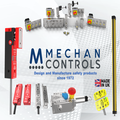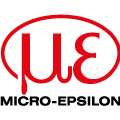
Posted to News on 3rd Jan 2007, 18:56
Racing motorcycle components are laser sintered
CRP Technology, which specialises in rapid prototyping and manufacturing for the motorsport industry, has demonstrated its capabilities by preparing two motorcycles in conjunction with Fantic Motor.

There are several different fields of application for CRP Technology's Windform XT and Windform GF rapid prototyping materials, as the company has demonstrated on its 250cc motorbike, the R250. CRP Technology began the challenge of building the racing motorbikes to compete in the MotoGP 250cc class, with the bikes built entirely by the CRP technical staff. Consequently two World Road Championship bikes have been campaigned in conjunction with Fantic Motor.
Thanks to top-level materials such as Windform GF and XT, it is now possible to use laser sintering for reliable and high-performance parts that are ready to race. For example, consider the creation of: a new air box configuration made by Windform XT for the CRP R250 engine, combined with a special carburettor insulator made by Windform GF; a new cowling for the CRP R250 made by Windform XT; a special Front mudguard for the CRP R250, with integrated air ducts, made by Windform XT; and a rear mudguard and seat for the CRP R250 made by Windform XT.
In F1 everything is about time, from reducing the time on the racing track, to reducing the time to deliver as many design iterations as possible. Steve Nevey of Red Bull Racing, comments: "In the wind tunnel, a half-scale car is continuously tested in as many aerodynamic configurations as time permits. And then, the inevitable question – can you make parts that go on the actual car? The advantages would be immense, if we could take that precious next step."
One material, many applications
Windform XT meets this requirement: it is suitable for use in the wind tunnel, it can be used to make master models for carbon lamination (and used in an autoclave) and it can be sintered for race car parts, of course.
CRP used it in order to bring a completely new bike to the MotoGP race tracks within six months and is still using it for next season's business.
It was the beginning of a great new challenge. During the 2005 season the most evident gap consisted in the power output of the engine and that is why most of the job has been focused on that in 2006. CRP Technology worked on the development of the engine, exploiting the rapid prototyping technology and the Windform materials.
The 2005 250cc engine set-up was a 90-degree twin-cylinder unit with reed valve and two 40mm carburettors. There were two air intakes on the side of the cowling, bringing fresh air to the two separated air boxes. After several tests to study the configuration of the two separated air boxes, in order to obtain a similar functionality of the two cylinders, it has not been possible to have two air boxes of the same dimensions, due to the overall dimensions.
Looking at the curves shows quite a regular output of power. In particular, a worsening of the power and torque curve is due to the search for higher power in a lower rev range.
One-piece air box
For this reason, during the 2006 season, a one-piece air box in Windform has been realised in order to better exploit the space inside the frame with the front air intake under the lower triple clamp. This has made it possible to achieve similar performance from the two cylinders, therefore making the set-up of the engine easier. The engine has immediately improved and the setting of the two carburettors was similar. This was a big success, as there were no more difficulties with the fuel supply being different from cylinder to cylinder. The lower cylinder's carburettor was very critical because the venturi was too close to the side of the air box at first. The carburettor has therefore been rotated, respecting the limits of the fuel level. Realising a new structural induction insulator in Windform XT, it has been possible to improve the functionality of the number-two cylinder.
With an increase in volume, better geometry of the air box and better positioning of the lower carburettor, a higher power and torque curve has been achieved, allowing the rider to exploit the engine already from low engine speeds.
Thanks to the mechanical wear resistance of CRP's SLS material, it has been possible to realise the air box and the insulator directly in Windform, shortening the development and realisation timing significantly.
Different kinds of insulators have been made and have been directly tested on the dyno until the best geometry was found. By archiving the files, the 'story' of the component can be preserved.
Cooling and front fender
Using an air box that exploits the whole space inside the frame, a big increase in power has been achieved. This increase is ruined by the engine's temperature that reaches 65-75degC with peaks of 75-80degC in the worse climatic conditions. These temperatures penalise the efficiency of the engine, frustrating the job done on the air box.
To resolve this problem, a new front fender, whose function was also of an air duct, was created, exploiting the potentialities of the rapid prototyping. It was realised in Windform XT and the idea was to bring fresh air to those 'hidden' parts of the radiator to increase the engine's cooling. Exploiting the SLS technology and the Windform XT material, it has been possible to realise the fender in a very short time and its use permitted to lower the temperature of 2degC and had absolutely no side effects for assembling and dynamics.
Rear fender
In order to optimise the air flow in the rear part of the bike, thus avoiding turbulences, a rear fender with two lateral fins to protect the swing arm was realised in Windform XT in a very short time. This part is very important to help the extraction of the hot air from the front and it also contains a duct for the rear braking oil pipe.
Fairing
The next step is to improve the cooling and the aerodynamics. From 2005, the air's front entry of the R250GP fairings has been increased in order to exploit the whole radiator and to facilitate the air's entry. As soon as possible, CRP Technology will test this solution on the track to verify its efficacy.
In motor sport and high-performance automotive applications, high quality and short lead times make the difference. CRP worked hard to improve properties not only for functional models for testing, as well as for high-end prototypes and small-lot production parts. The Windform family was born in 1998 with Windform GF (aluminium and glass filled), a compound later developed by other manufacturers too, and continued with Windform PRO and PRO B (aluminium and glass flakes filled; graphite filled). The latest carbon fibre filled material branded Windform XT, launched in December 2004, is a laser sintering powder with higher mechanical and thermal properties. Since it was launched two years ago (December 2004) it has been further improved and optimised.
Want the latest machine building news straight to your inbox? Become a MachineBuilding member for free today >>

















